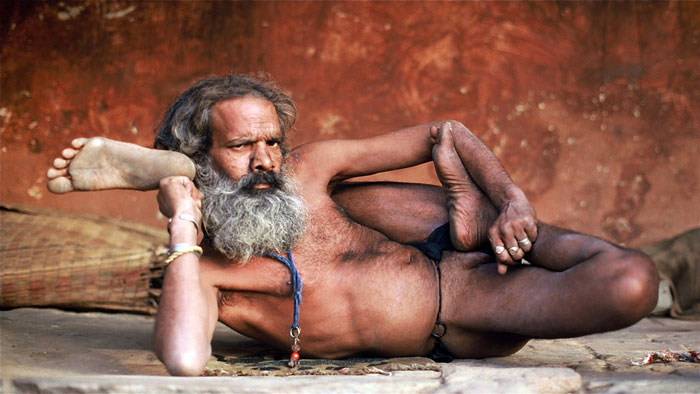
Traveling through a city hunting for photos opens doors into the local culture and always proves to be a new learning experience. All of these experiences add to my personal education and understanding, leading to a better trip. But it all starts and ends with a smile from you.
Nepalese Yoga, Nepal, Kathmandu
“Hunting people” is my favorite pastime, one on one and eye to eye. Anyone can do it with any type of camera.
People can be friendly, gracious and hospitable, but they can also be unpredictable, elusive and sometimes dangerous. Like snowflakes, no two are the same.
To successfully enter and connect into the lives of strangers we meet requires a cross section set of skills. The encounters may be brief and intense or perhaps pleasantly linger on, but either way, the intimate rewards are never ending. Group or family portraits are generally welcomed. Everyone likes to have a family photo. After, you may have the opportunity to break away and photograph any interesting characters within the group. You have established a small bond. Be sure to thank then and give them your contact card or get their name and address (keep a pen and notepad in your bag) and please remember to send them a printed photo. I usually find myself walking away from these people encounters with a big smile, a fun memory or a bittersweet tear in my eye. How great is that?
The goal is not to change your subjects,
but for the subject to change the photographer -Author unknown
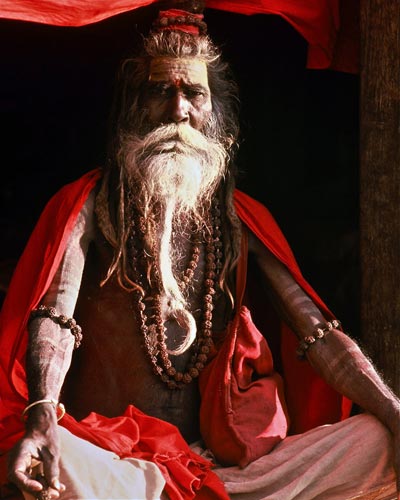
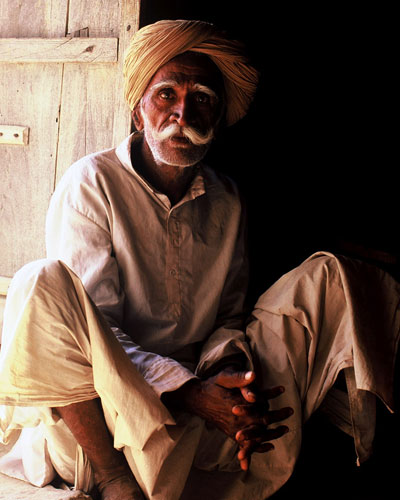
For me, photos are a valuable keepsake of my life experiences of meeting and photographing people.
Indian Holy Man
Nepal, Kathmandu
Close ups are beautiful. If you think you’re too close, try getting a little closer if your subject will allow it.
Thar Desert, India
If you have the people skills required to connect with others, “people hunting” with your camera is very gratifying.
My favorite portrait people lens would be my Nikon 105mm 1.8. It’s tack sharp and crisply separates the subject from the background. I generally photograph around the f/5.6 range for optimum lens sharpness—that “sweet spot”.
Many people within various cultures in the world feel honored to have their photos taken. Perhaps they want some sort of evidence or record that they existed in life. When people show trust and pose for you, the soul comes from their eyes straight into your lens. It is then that I get my most insightful images.
I feel honored for the opportunity I have been allowed. To me, it translates as a true compliment.
But remember always that there are others who are extremely sensitive about their image being ‘captured’ by a camera. Afraid that my Nikon is a tool to steal their souls, they hide and dodge my advances. In the desert of Pakistan I once had a sandal thrown at me from a village elder. The man’s aggressive gesture was displaying his highest form of disrespect. Respecting his concern, I quickly waved goodbye and moved on.
Note: There are instances where you may have to quickly move on. Hanging around burns the element of surprise and can even make you a target of theft or unwanted notice. The sun keeps moving and so should you.
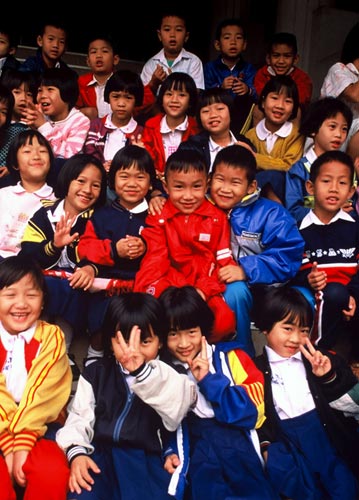
During my travels I have especially enjoyed the warm feeling I get from the smiles of the young people I photograph. Their genuine happiness is infectious and keeps me optimistic about life.
Photo Tips for Capturing People Photos
1. Daylight photography is all about the sunlight and how to add or subtract it from your vision. A little custom light can really make a difference in your close-ups. I always carry a black T-shirt and a white/salmon colored sari cloth for two reasons. In close, the black shirt adds negative light which helps saturate the image. It also lessons the chance of an ugly white reflection in the eyes. When I’m photographing wide angles up close the salmon colored sari cloth adds warm fill and an interesting catch light to the eyes.
Position yourself where the sun is your friend. Finding nice backlight or a low, hard, edge light adds dramatic effects.
2. Sunrise & Sunsets: The sunrise offers the photographer an opportunity to photograph the waking of a city. Witnessing the day to day activities unfold with soft beautiful light. The quiet, clear morning without the city pollutants adds a cooler hue to a peaceful beginning of a new day. And at the days end the sun is low, the shadows are long and the colors rich and vibrant. Also prime photography time.
There are always two people in every picture: the photographer and the viewer -Ansel Adams
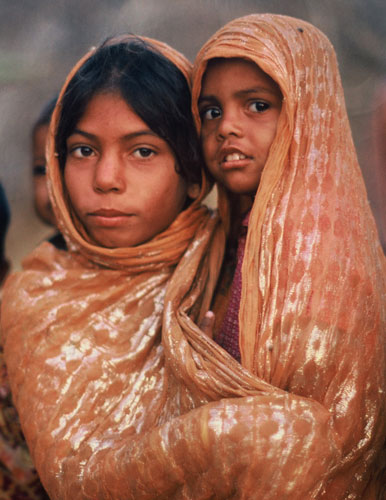
Pakistani Desert
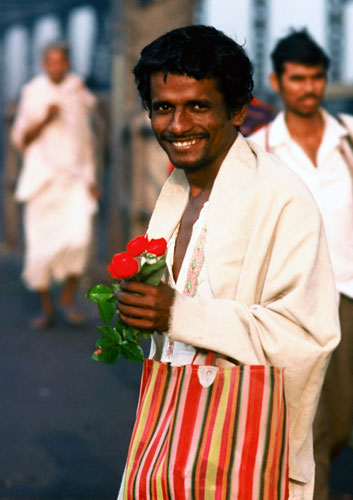
Calcutta, India
3. Photograph People being People. Try to find subjects busy doing their jobs in their natural environments. It could be an artist, street vendor or anyone who attracts your eye. Smile and gesture for a photo. If declined by bad vibes respect those wishes. Forcing yourself on someone is bad etiquette and an angry photo is useless.
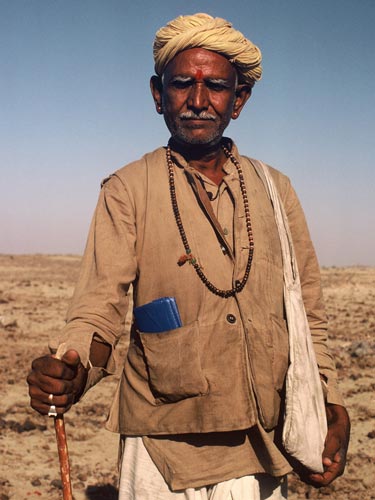
This proud nomadic goat herder was very happy to have his photo taken. His hard life was not reflected in his demeanor.
Rajasthan, India
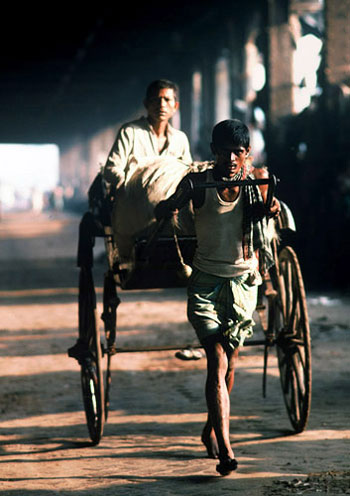
Sunset: Calcutta, India
4. Shadows & Catch Lights: If possible, try to catch the shadowed side of the face with a lighter background area and the lighter side of the face with a darker background area. Using the light/dark/light/dark technique is very subtle but it separates and highlights the main subject from a dark background or vise versa. It really helps to create a balanced and pleasing photograph.
Concentrate on the catch lights in the eyes reflection. Focus on the eye closest to you. The sparkle of the eyes makes the image come alive.
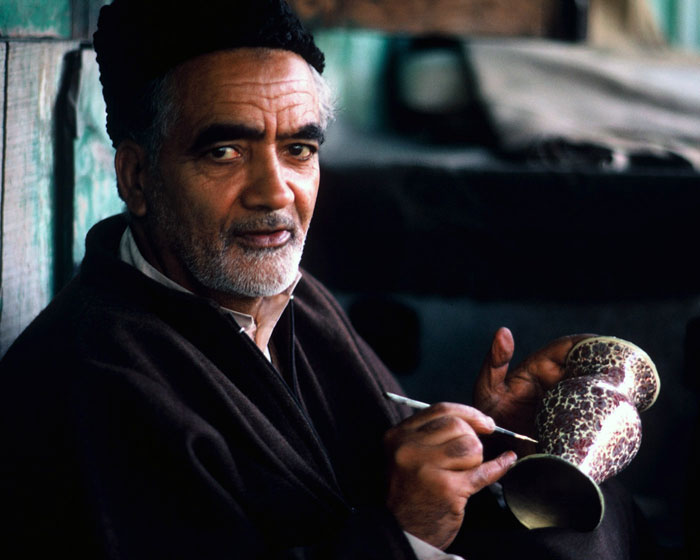
Kashmir, India
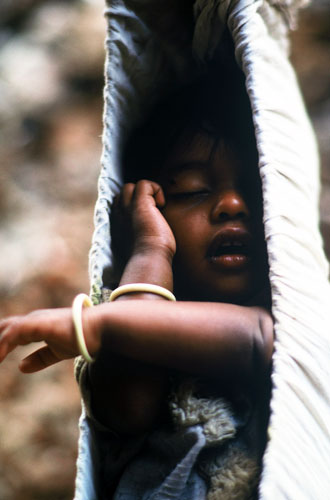
A little curiosity and effort makes it possible to discover these hidden gems. Bombay, India
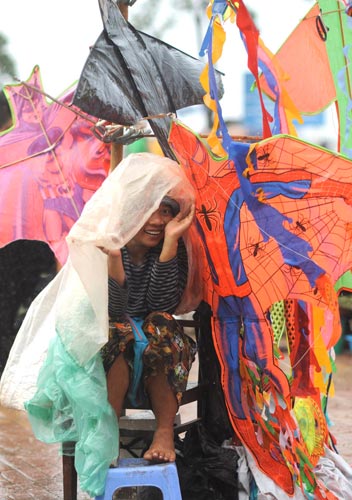
It may be rain, but think rainbows.
Phnom Penh, Cambodia
5. Weather: Interesting images can also materialize during adverse weather conditions, so don’t let that stop you. Even if only for a short period, I always try to photograph in the rain. I carry two small disposable plastic rain coats in my backpack, along with a small space blanket to protect my camera. I cut the space blanket to make it narrow and wrap it around my pack straps on my shoulder. And immediately after a rain stops the air is magical. It doesn’t last long, but the sunlight bouncing off the moisture particles in the air is nothing short of magic, so be prepared to make some great photos.
6. The “Made Photo” versus the “Found Photo”: “Making a photo” is all about staging a scene or laying out a photo like you envision it. Creating portraits while traveling can also fit into this category, but my favorite way of making these photos are by “finding” them. They can demand a bit more energy and patience and the gift of a quick creative eye, but the discovery process is the most fun. When everyone is looking left, try looking right–think outside the box to “find” the hidden treasures within a scene. Travel photography is all about putting yourself in the right place, at the right time, and then quickly dissecting all the information.
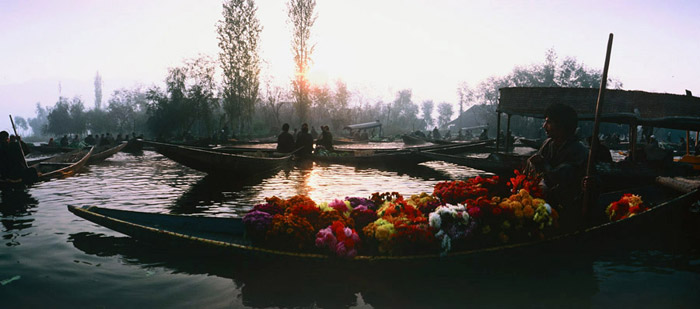
Early mornings at the floating market is a unforgettable location to people watch. Stay low and position your camera with the background in mind. Then wait for the action to come to you. Let the subject do the work. Dal Lake, Kashmir
7. Choose Your Subjects Wisely: There are people everywhere, so wonderful photo opportunities are in abundance. Create them at their best—during their daily routines, at work, at play, in unusual settings…
I choose to never photograph the ills and misery of those less fortunate—to not have a visual reminder of their misfortune and hardship. I personally find no reward in following a man with no arms or a blind street vendor. It’s just not me–it’s a “Karmic thing”.
Tip: Poverty and hunger forces people to present themselves in unusual ways in order to find a means of supporting themselves and their families, so giving money to begging children anywhere is asking for trouble. This practice attracts a crowd quickly and the situation can escalate and become uncomfortable. To be followed and surrounded by a dozen children picking thru your clothes and begging for money is unsettling. It may not be the photo opportunity you thought it would be. If you want to help with donations, seeking out reputable charity institutions in Asia isn’t difficult.
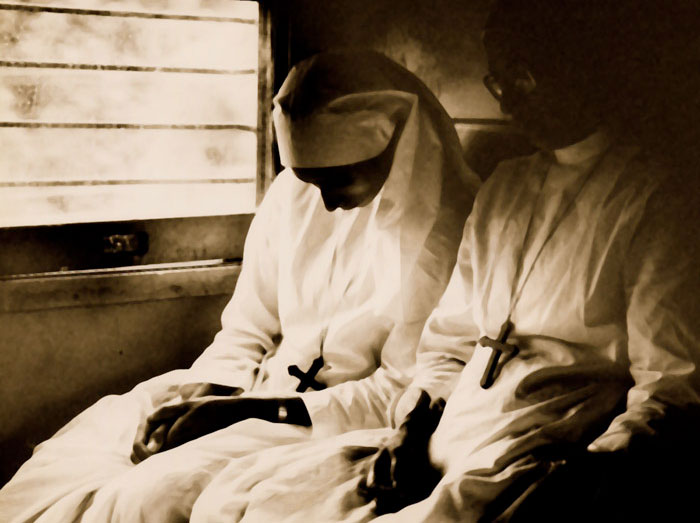
Always having your camera ready is sometimes not easy. The everyday hassle of dealing with luggage while traveling can be difficult, but the rewards are priceless. Lucknow Mail Express Train, India
A pot of gold is waiting to reward the photographer who takes the time and optimistic energy to engage eye to eye with humans. Don’t be shy. Whether photographing in a foreign country or in your own back yard, photographing people can be exciting and challenging. Try to read people and have fun. Put yourself out there. Everyday smiles and respect is the key to making that special photo. Keep your eyes open and remember that it’s fun to be nice.
Happy hunting!
Read the Introduction…
Photo Wanderlust – Part I: Packing for “Country Hopping” Adventure Photographers
Photo Wanderlust – Part II: Preparing for a “Country Hopping” Photo Adventure
Photo Wanderlust – Part III: Security for a “Country Hopping” Photo Adventure
Photo Wanderlust – Part IV: Bus Travel for a “Country Hopping” Photo Adventure
Photo Wanderlust – Part VI: “Photo Photographing Strategy”
Photo Wanderlust – Part VII: “Photographing Silhouettes”
Photo Wanderlust – Part VIII: “Serendipity”
by Ron Veto
Article and photos: © Ron Veto. All right reserved.

Leave a Reply